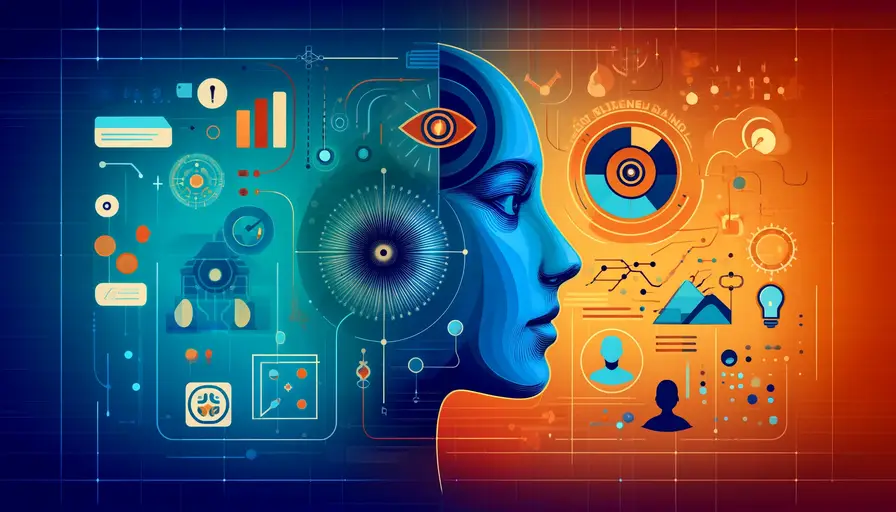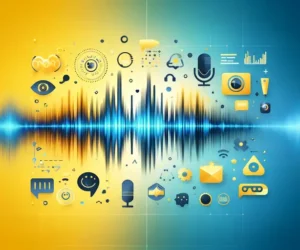
Exploring the Role of Machine Learning in Facial Expression Evaluation

Machine learning has revolutionized numerous fields, and one of its most compelling applications is in the realm of facial expression evaluation. By leveraging sophisticated algorithms, machine learning models can analyze facial expressions with remarkable accuracy, enabling a wide range of applications from security to healthcare. This article explores how machine learning is employed in facial expression evaluation, highlighting the key technologies, methodologies, and practical examples that illustrate its impact.
Understanding Facial Expression Evaluation
Defining Facial Expression Analysis
Facial expression analysis involves the automatic recognition and interpretation of human emotions from facial expressions. It combines computer vision and machine learning to identify subtle changes in facial features that correspond to different emotions. This technology has applications in various fields such as psychology, human-computer interaction, and entertainment.
Machine learning models trained on vast datasets of facial images can learn to distinguish between different expressions such as happiness, sadness, anger, and surprise. These models analyze features like the movement of facial muscles, the shape of the mouth, and the position of the eyebrows to make accurate predictions.
Example of facial feature extraction using OpenCV in Python:
Applications of Machine Learning for Predicting X and Yimport cv2
# Load the pre-trained Haar Cascade classifier for face detection
face_cascade = cv2.CascadeClassifier(cv2.data.haarcascades + 'haarcascade_frontalface_default.xml')
# Load the image
image = cv2.imread('face.jpg')
gray = cv2.cvtColor(image, cv2.COLOR_BGR2GRAY)
# Detect faces in the image
faces = face_cascade.detectMultiScale(gray, scaleFactor=1.1, minNeighbors=5, minSize=(30, 30))
# Draw rectangles around detected faces
for (x, y, w, h) in faces:
cv2.rectangle(image, (x, y), (x+w, y+h), (255, 0, 0), 2)
# Display the result
cv2.imshow('Face Detection', image)
cv2.waitKey(0)
cv2.destroyAllWindows()Importance in Various Industries
Facial expression evaluation is crucial in several industries. In security, it enhances surveillance systems by detecting suspicious behavior or emotional distress. In healthcare, it assists in diagnosing mental health conditions and monitoring patient well-being. In marketing, it helps gauge consumer reactions to products and advertisements.
In the automotive industry, facial expression analysis is used to monitor driver alertness, potentially preventing accidents caused by drowsiness or distraction. The gaming industry employs this technology to create more immersive experiences by adapting gameplay based on the player’s emotional state.
Challenges in Facial Expression Analysis
Despite its potential, facial expression analysis faces several challenges. Variability in lighting conditions, head poses, and individual facial features can affect accuracy. Additionally, cultural differences in expressing emotions and the presence of occlusions (e.g., glasses, masks) add complexity to the analysis.
To overcome these challenges, machine learning models need to be trained on diverse datasets that represent various conditions and demographics. Advanced techniques such as deep learning and transfer learning are often employed to enhance model robustness and generalization.
Enhancing Data Mining Techniques with Machine Learning and AIMachine Learning Techniques for Facial Expression Evaluation
Supervised Learning Approaches
Supervised learning is a common approach for training models to recognize facial expressions. In this method, labeled datasets containing images of faces with corresponding emotion labels are used to train algorithms. These models learn to map facial features to specific emotions, enabling accurate predictions on new data.
Popular supervised learning algorithms for facial expression analysis include support vector machines (SVM), k-nearest neighbors (KNN), and decision trees. Deep learning models, particularly convolutional neural networks (CNNs), have shown exceptional performance in this domain due to their ability to automatically extract relevant features from images.
Example of training a CNN for facial expression recognition using Keras:
import tensorflow as tf
from tensorflow.keras.models import Sequential
from tensorflow.keras.layers import Conv2D, MaxPooling2D, Flatten, Dense
from tensorflow.keras.preprocessing.image import ImageDataGenerator
# Define the CNN model
model = Sequential([
Conv2D(32, (3, 3), activation='relu', input_shape=(48, 48, 1)),
MaxPooling2D((2, 2)),
Conv2D(64, (3, 3), activation='relu'),
MaxPooling2D((2, 2)),
Conv2D(128, (3, 3), activation='relu'),
MaxPooling2D((2, 2)),
Flatten(),
Dense(128, activation='relu'),
Dense(7, activation='softmax')
])
# Compile the model
model.compile(optimizer='adam', loss='categorical_crossentropy', metrics=['accuracy'])
# Prepare the data
train_datagen = ImageDataGenerator(rescale=1./255)
train_generator = train_datagen.flow_from_directory(
'data/train',
target_size=(48, 48),
batch_size=64,
color_mode='grayscale',
class_mode='categorical'
)
# Train the model
model.fit(train_generator, epochs=25, steps_per_epoch=train_generator.samples // 64)Unsupervised Learning Approaches
Unsupervised learning techniques can also be employed for facial expression evaluation. These methods do not require labeled data and instead identify patterns and structures within the data. Clustering algorithms, such as k-means and hierarchical clustering, are commonly used to group similar facial expressions.
Exploring Road-Related Machine Learning DatasetsDimensionality reduction techniques like principal component analysis (PCA) and t-distributed stochastic neighbor embedding (t-SNE) help visualize high-dimensional facial features, revealing underlying patterns in the data. These approaches can be useful for exploratory data analysis and feature extraction.
Example of facial expression clustering using k-means in Python:
from sklearn.cluster import KMeans
from sklearn.decomposition import PCA
import matplotlib.pyplot as plt
# Load the dataset (assume X contains facial features)
X = load_facial_features()
# Reduce dimensionality with PCA
pca = PCA(n_components=2)
X_pca = pca.fit_transform(X)
# Apply k-means clustering
kmeans = KMeans(n_clusters=5, random_state=42)
clusters = kmeans.fit_predict(X_pca)
# Plot the clusters
plt.scatter(X_pca[:, 0], X_pca[:, 1], c=clusters, cmap='viridis')
plt.title("Facial Expression Clustering with K-Means")
plt.xlabel("PCA Component 1")
plt.ylabel("PCA Component 2")
plt.show()Hybrid Approaches
Hybrid approaches combine supervised and unsupervised learning techniques to improve the accuracy and robustness of facial expression evaluation models. For example, unsupervised methods can be used to pre-train a model on a large dataset, followed by supervised fine-tuning on labeled data. This approach leverages the strengths of both techniques, enhancing model performance.
Transfer learning, a form of hybrid approach, involves pre-training a model on a related task and then fine-tuning it on the target task. This technique is particularly useful when labeled data is scarce, as it allows the model to benefit from the knowledge acquired during pre-training.
Enhancing Empirical Asset Pricing with Machine LearningExample of transfer learning for facial expression recognition using Keras:
from tensorflow.keras.applications import VGG16
from tensorflow.keras.models import Model
from tensorflow.keras.layers import Dense, Flatten
# Load the pre-trained VGG16 model
base_model = VGG16(weights='imagenet', include_top=False, input_shape=(48, 48, 3))
# Add custom layers for facial expression recognition
x = base_model.output
x = Flatten()(x)
x = Dense(128, activation='relu')(x)
predictions = Dense(7, activation='softmax')(x)
# Define the new model
model = Model(inputs=base_model.input, outputs=predictions)
# Freeze the layers of the base model
for layer in base_model.layers:
layer.trainable = False
# Compile the model
model.compile(optimizer='adam', loss='categorical_crossentropy', metrics=['accuracy'])
# Prepare the data (assume train_generator is defined as in the previous example)
model.fit(train_generator, epochs=10, steps_per_epoch=train_generator.samples // 64)
# Unfreeze some layers and fine-tune the model
for layer in base_model.layers[-4:]:
layer.trainable = True
# Recompile and continue training
model.compile(optimizer='adam', loss='categorical_crossentropy', metrics=['accuracy'])
model.fit(train_generator, epochs=10, steps_per_epoch=train_generator.samples // 64)Practical Applications of Facial Expression Evaluation
Healthcare and Therapy
In healthcare, facial expression evaluation is used for diagnosing and monitoring mental health conditions. By analyzing patients' facial expressions, clinicians can gain insights into their emotional states and detect signs of depression, anxiety, or other psychological disorders. This non-invasive method provides valuable information that complements traditional assessment techniques.
Therapists use facial expression analysis to evaluate the effectiveness of treatments and monitor patients' progress. This technology helps identify subtle emotional changes that may not be evident through verbal communication alone, enabling more personalized and effective interventions.
Human-Computer Interaction
Facial expression evaluation enhances human-computer interaction by enabling devices to respond to users' emotions. For instance, virtual assistants and chatbots can adjust their responses based on the user's facial expressions, creating more natural and engaging interactions. This capability is particularly valuable in customer service, where understanding and responding to emotions can improve user satisfaction.
Using Machine Learning for Mental Health Tracking and SupportIn the realm of gaming, facial expression analysis creates more immersive experiences. Games can adapt their content based on the player's emotional state, enhancing engagement and enjoyment. This technology also has potential applications in virtual reality (VR) and augmented reality (AR), where detecting and responding to user emotions can create more realistic and interactive environments.
Marketing and Consumer Research
Facial expression evaluation is a powerful tool in marketing and consumer research. By analyzing consumers' reactions to advertisements, products, and services, companies can gain insights into their preferences and emotions. This information helps businesses refine their marketing strategies and develop products that resonate with their target audience.
Retailers use facial expression analysis to understand customer behavior in physical stores. By monitoring shoppers' facial expressions, they can assess their satisfaction and identify areas for improvement. This technology also enables personalized shopping experiences, where recommendations and promotions are tailored to the customer's emotional state.
Example of analyzing consumer reactions using Python:
Effective Strategies for Machine Learning in Noisy Data Environmentsimport cv2
import pandas as pd
# Load the pre-trained face and emotion detection models
face_cascade = cv2.CascadeClassifier(cv2.data.haarcascades + 'haarcascade_frontalface_default.xml')
emotion_model = load_emotion_model('emotion_model.h5')
# Function to analyze emotions from a video frame
def analyze_emotions(frame):
gray = cv2.cvtColor(frame, cv2.COLOR_BGR2GRAY)
faces = face_cascade.detectMultiScale(gray, scaleFactor=1.1, minNeighbors=5, minSize=(30, 30))
emotions = []
for (x, y, w, h) in faces:
roi_gray = gray[y:y+h, x:x+w]
emotion = emotion_model.predict_emotion(roi_gray)
emotions.append(emotion)
return emotions
# Capture video from the camera
cap = cv2.VideoCapture(0)
while True:
ret, frame = cap.read()
if not ret:
break
# Analyze emotions in the frame
emotions = analyze_emotions(frame)
print("Detected Emotions:", emotions)
# Display the frame
cv2.imshow('Video', frame)
if cv2.waitKey(1) & 0xFF == ord('q'):
break
cap.release()
cv2.destroyAllWindows()Future Trends and Innovations
Advances in Deep Learning
Deep learning continues to drive advancements in facial expression evaluation. Researchers are developing more sophisticated models that can recognize a broader range of emotions and facial expressions with higher accuracy. These models leverage large-scale datasets and powerful computing resources to improve performance and generalization.
Innovations in neural network architectures, such as transformers and attention mechanisms, are enhancing the capability of facial expression analysis systems. These advances enable models to capture complex spatial and temporal relationships in facial features, leading to more nuanced and accurate evaluations.
Integration with Other Technologies
The integration of facial expression evaluation with other technologies, such as natural language processing (NLP) and physiological monitoring, is expanding its applications. Combining facial expression analysis with speech recognition and sentiment analysis provides a more comprehensive understanding of human emotions.
Wearable devices equipped with sensors for monitoring heart rate, skin conductance, and other physiological signals can complement facial expression evaluation. This multi-modal approach enhances the accuracy and reliability of emotion detection, providing deeper insights into emotional states.
Ethical Considerations and Privacy
As facial expression evaluation technology advances, ethical considerations and privacy concerns become increasingly important. The use of facial recognition and emotion detection raises questions about consent, data security, and potential misuse. It is crucial to establish guidelines and regulations that protect individuals' privacy and ensure the ethical use of this technology.
Developers and organizations must prioritize transparency and user consent, providing clear information about how data is collected, used, and stored. Implementing robust security measures and anonymizing data can help mitigate privacy risks and build trust with users.
Machine learning has significantly advanced the field of facial expression evaluation, enabling a wide range of applications across industries. By understanding the challenges, leveraging advanced techniques, and adhering to ethical standards, organizations can harness the power of this technology to drive innovation and improve human interactions. The future of facial expression analysis holds exciting possibilities, promising even more accurate, reliable, and impactful applications.
If you want to read more articles similar to Exploring the Role of Machine Learning in Facial Expression Evaluation, you can visit the Applications category.



You Must Read